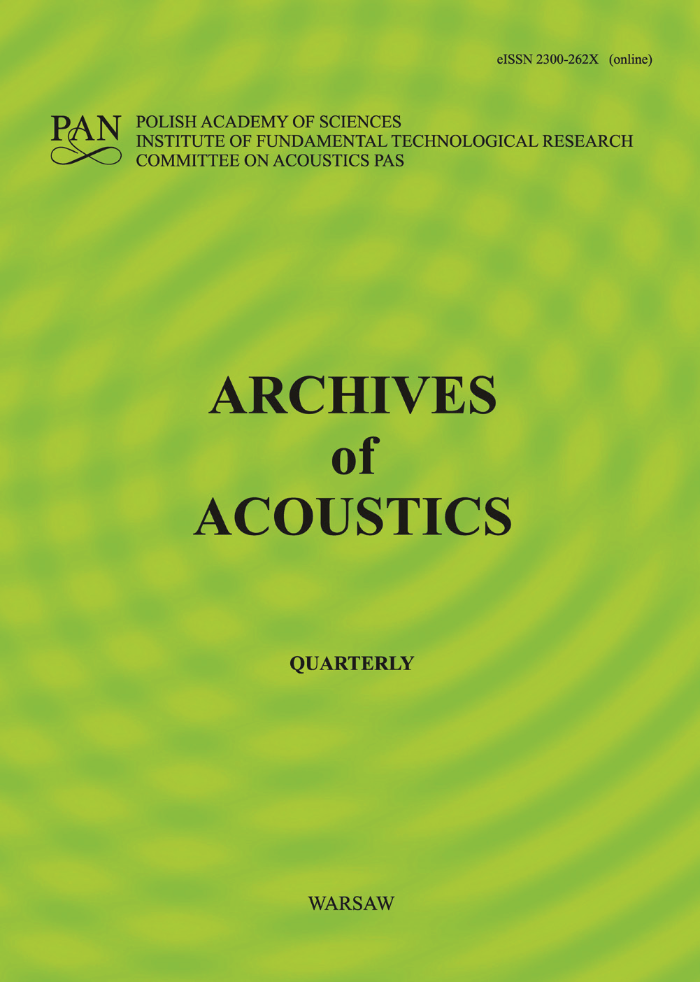Abstract
This research determines an identification system for the types of Beiguan music – a historical, nonclassical music genre – by combining artificial neural network (ANN), social tagging, and music information retrieval (MIR). Based on the strategy of social tagging, the procedure of this research includes: evaluating the qualifying features of 48 Beiguan music recordings, quantifying 11 music indexes representing tempo and instrumental features, feeding these sets of quantized data into a three-layered ANN, and executing three rounds of testing, with each round containing 30 times of identification. The result of ANN testing reaches a satisfying correctness (97% overall) on classifying three types of Beiguan music. The purpose of this research is to provide a general attesting method, which can identify diversities within the selected non-classical music genre, Beiguan. The research also quantifies significant musical indexes, which can be effectively identified. The advantages of this method include improving data processing efficiency, fast MIR, and evoking possible musical connections from the high-relation result of statistical analyses.Keywords:
artificial neural network, Beiguan music, music information retrieval, social taggingReferences
1. Briot J.-P., Hadjeres G., Pachet F.-D. (2019), Deep Learning Techniques for Music Generation, Computational Synthesis and Creative Systems, Springer, arXiv:1709.01620.
2. Hagan M.T., Demuth H.B., Beale M. (2002), Neural Network Design, CITIC Publishing House, Beijing.
3. Lamere P. (2008), Social tagging and music information retrieval, Journal of New Music Research, 37(2): 101–114, https://doi.org/10.1080/09298210802479284.
4. Lu C.-K. (2011), Beiguan Music, Taichung, Taiwan: Morningstar.
5. Pan J.-T. (2019), The transmission of Beiguan in higher education in Taiwan: A case study of the teaching of Beiguan in the department of traditional music of Taipei National University of the Arts [in Chinese], Journal of Chinese Ritual, Theatre and Folklore, 2019.3(203): 111–162.
6. Rosner A., Schuller B., Kostek B. (2014), Classification of music genres based on music separation into harmonic and drum components, Archives of Acoustics, 39(4): 629–638, https://doi.org/10.2478/aoa-2014-0068.
7. Tzanetakis G., Kapur A., Scholoss W.A., Wright M. (2007), Computational ethnomusicology. Journal of Interdisciplinary Music Studies, 1(2): 1–24.
8. Wiering F., de Nooijer J., Volk A., Tabachneck-Schijf H.J.M. (2009), Cognition-based segmentation for music information retrieval systems. Journal of New Music Research, 38(2): 139–154, https://doi.org/10.1080/09298210903171145.
9. Yao S.-N., Collins T., Liang C. (2017), Head-related transfer function selection using neural networks, Archives of Acoustics, 42(3): 365–373, https://doi.org/10.1515/aoa-2017-0038.
10. Yeh N. (1988), Nanguan music repertoire: categories, notation, and performance practice, Asian Music, 19(2): 31–70, https://doi.org/10.2307/833866.
2. Hagan M.T., Demuth H.B., Beale M. (2002), Neural Network Design, CITIC Publishing House, Beijing.
3. Lamere P. (2008), Social tagging and music information retrieval, Journal of New Music Research, 37(2): 101–114, https://doi.org/10.1080/09298210802479284.
4. Lu C.-K. (2011), Beiguan Music, Taichung, Taiwan: Morningstar.
5. Pan J.-T. (2019), The transmission of Beiguan in higher education in Taiwan: A case study of the teaching of Beiguan in the department of traditional music of Taipei National University of the Arts [in Chinese], Journal of Chinese Ritual, Theatre and Folklore, 2019.3(203): 111–162.
6. Rosner A., Schuller B., Kostek B. (2014), Classification of music genres based on music separation into harmonic and drum components, Archives of Acoustics, 39(4): 629–638, https://doi.org/10.2478/aoa-2014-0068.
7. Tzanetakis G., Kapur A., Scholoss W.A., Wright M. (2007), Computational ethnomusicology. Journal of Interdisciplinary Music Studies, 1(2): 1–24.
8. Wiering F., de Nooijer J., Volk A., Tabachneck-Schijf H.J.M. (2009), Cognition-based segmentation for music information retrieval systems. Journal of New Music Research, 38(2): 139–154, https://doi.org/10.1080/09298210903171145.
9. Yao S.-N., Collins T., Liang C. (2017), Head-related transfer function selection using neural networks, Archives of Acoustics, 42(3): 365–373, https://doi.org/10.1515/aoa-2017-0038.
10. Yeh N. (1988), Nanguan music repertoire: categories, notation, and performance practice, Asian Music, 19(2): 31–70, https://doi.org/10.2307/833866.







